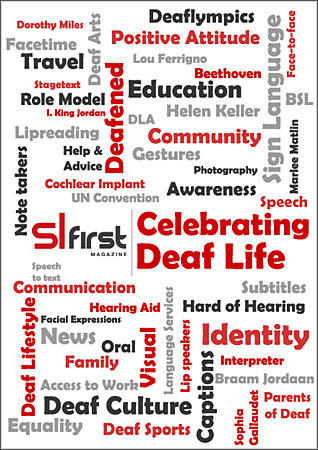Products13th October 2013
Modern Communication Technology
Karl Jenkins takes a look at the 'new lines of communication', available through the introduction of new technology
Technology is improving constantly, faster, smaller and most of the time, better. Here, SL First has a quick look at some of the modern technologies that have changed the way we communicate.
SMS & Email
In recent times, email has become fully integrated into the business world and even in people’s personal lives. The ability to send messages and pictures instantly to people all over the world, without having to be online at the same time is a fantastic method of communication, albeit not without its problems. Text messages (SMS) on mobiles phones have been around for just over 20 years and last year around 150 billion text messages were sent. That is around 300,000 messages each minute of every day – and that’s just in the UK! Text messaging has been a revolution for deaf and hard of hearing people, allowing everyone to stay in touch with family and friends. It’s just a shame that so few businesses have realised the potential of SMS. With the popularity of text messaging still on the rise, and now it’s become more popular than phone calls (even amongst the hearing population), it seems strange that most companies still don’t allow their customers to get in touch via text message. It’s a small change that would hugely increase convenience for a lot of people.
Video Chat
 Video chat (or Video Conferencing) is not a new technology. It has been around in some form since the invention of television. However, it has taken a lot longer for data networks to catch up and be able to provide smooth video services. Since the 2000’s video chat has become much more popular due to free services like Skype (www.skype.com) and iChat being introduced.
Video chat (or Video Conferencing) is not a new technology. It has been around in some form since the invention of television. However, it has taken a lot longer for data networks to catch up and be able to provide smooth video services. Since the 2000’s video chat has become much more popular due to free services like Skype (www.skype.com) and iChat being introduced.
Since then, many more video chatting services have appeared like ooVoo (www.oovoo.com), FaceTime (www.apple.com/uk/mac/facetime) and Google Talk (www.google.co.uk/talk). For Deaf BSL users, video chatting has been a big and welcome development. It is no longer necessary for people to trek across the country to be able to chat to friends and family in their preferred language. They can simply call them via the nearest computer or Smartphone and share their latest news.
It is not just sign language users that can benefit from video calling though – anyone with difficulties using a telephone might be better served with a video call. It means you are able to see the conversational and body language cues usually missing from an audio-only phone call. It also means that those who use lip-reading are able to continue to do so as they can see the other person’s face. With the introduction of ‘4G’ services (broadband on mobile phones) now underway in the UK, providing people with a much clearer and smoother video experience, it is expected that more people will start to use video calling facilities.
Vine
Twitter has become extremely popular over the last year or two. People can use it for direct access to companies and organisations, and similarly for those same organisations it is an excellent advertising tool. Vine is the new service from Twitter (launched January 2013 - www.vine.co). Much like Twitter requires users to be to-the-point and keep their messages to 140 characters or less, the Vine service allows people to upload short video clips that must be 6 seconds or less. Six seconds doesn’t seem like much time, but it would probably be possible to squeeze a few sentences in BSL into that clip. So, will this become a popular method of communication for Deaf people? Will it one day replace text messaging? Doubtful, but time will tell.
Video Interpreting
Another new service to rise out of the video calling revolution is Video Relay Services (VRS) and Video Remote Interpreting (VRI). VRS allows sign language users to make ‘phone calls’ in real time to any non-Deaf person via a sign language interpreter, and of course the system also allows any hearing person or organisation to call a deaf person too. It works in a similar way to the older Type Talk service but allows sign language users to communicate via their preferred language rather than force them to communicate via written English (their second language in many cases). VRI works in a similar way, in that conversation happens via a real time interpreter, however, in this situation the Deaf and hearing person are sat together and the interpreter is accessed remotely.
One current service trying to provide an all-encompassing service is myFriend (www.myfriendcentral.com). This service can be used for direct video calls between sign language users, interpreted calls (VRS/VRI), real time text chat – direct or via ‘Talk by Text’. It also has speech-to-text translation. The speech-to-text translation is ideal for people who would like to speak themselves during a call, but have difficulties hearing the other person – using this technology, they will be able to see live (automatic) subtitles appear.
Article by Karl Jenkins
posted in Technology / Products
13th October 2013





